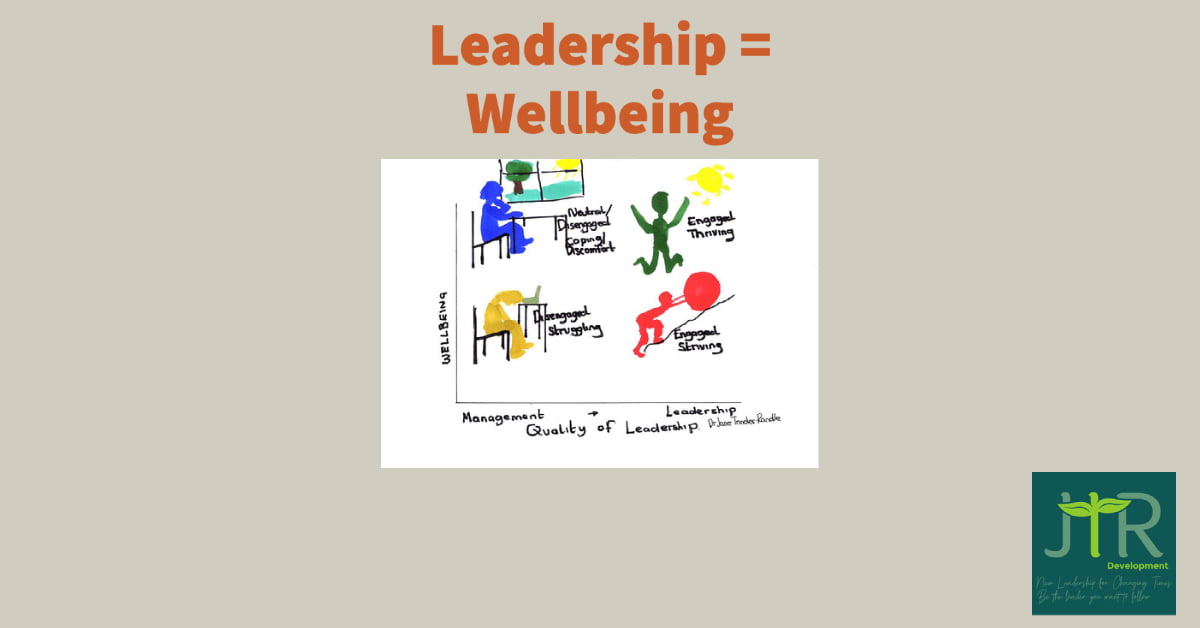
Leadership = Wellbeing
We spend around a third of our lives working, so we want that to be as positive experience as possible. The business case for individual wellbeing is obvious. There is also a business case organisationally. Gallup have found 75% of medical costs occur for preventable conditions. The Workforce Institute at UKG which 3,400 people across 10 countries found, 43% of employees report they are exhausted, and 78% say stress negatively impacts their work performance, 64% say it detracts from their wellbeing and 62% say it degrades their relationships. In other words poor wellbeing is negatively correlated with productivity, innovation, and engagement. Organisations with engagement are more profitable. The uncertainty and ambiguity we will continue to experience in many areas of life contribute to the figures Gallup published. What can we do about it? Obviously we have some personal responsibility but research shows that our leader has perhaps the most significant influence in the workplace.
What do we mean by wellbeing? Researchers have different perspectives but they include: Subjective wellbeing (how individuals view their wellbeing) and objective measures. A holistic definition requires one to take into account both subjective and objective elements: physical, mental, emotional, social and cognitive elements, are able to meet life goals and find purpose, have positive feelings about life and negative ones are minimised, are engaged in their career, live in decent places with sufficient financial resource, have some autonomy and are led by people who foster an environment where people can learn and feel safe.
Transformational Leadership as opposed to management research enables wellbeing. This aligns with the research by Gallup on engagement as it is an almost identical set of actions required by the leader. Wellbeing of course is not just determined by our worklife, it is also about general health, social relationships, outside interests, and the environment we live in. So if you lead others scan the table below and see where you might improve the wellbeing of others.
Table: How a leader enables or detracts from wellbeing.
| Negative impact to wellbeing | Positive impact to wellbeing |
| High directive style
Blame Just looks after self or others Not delegating sufficiently Mainly task orientated Treat groups as homogenous Focus on workplace stretch targets Do not prioritise self awareness Ignore or don’t acknowledge ambiguity and uncertainty Don’t provide necessary resource Believe emotional, mental and physical health is the province of HR, Welfare etc Are not aware of the impact they have on others
|
Collaborative, Facilitative styles
Learning Looks after self and others Encourage empowerment and teamwork Connect task to purpose Consider individuals needs Focus on balance of work and personal targets Prioritise personal development Acknowledge ambiguity and uncertainty and support other to develop coping approaches Provide sufficient resource Accept emotional, mental and physical health is your responsibility for you and others Provide an environment where people feel psychologically safe
|
I am here to help you
Get in touch with me today and let’s start the journey together. If you want further information about the general coaching programmes please see the attached coaching brochure 2



